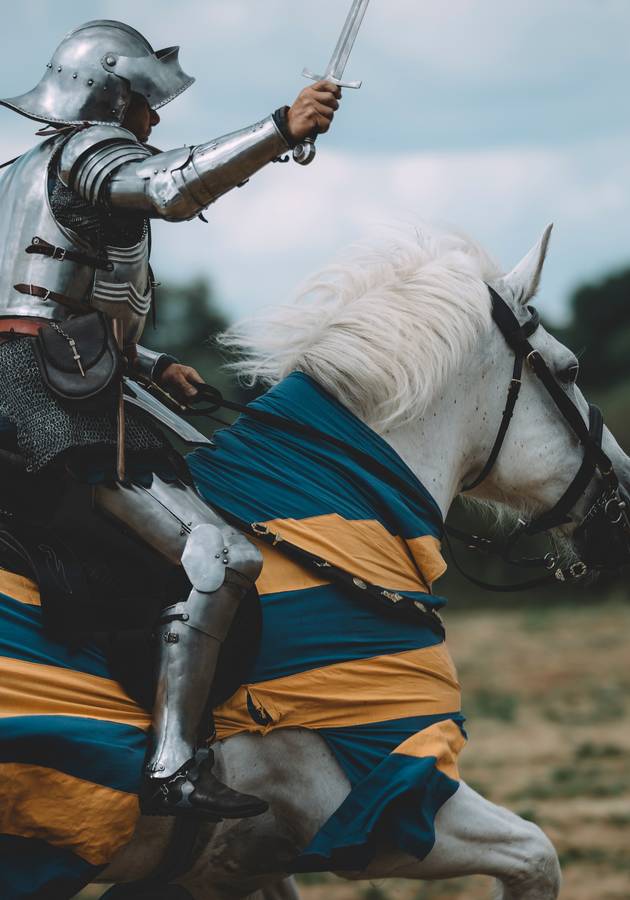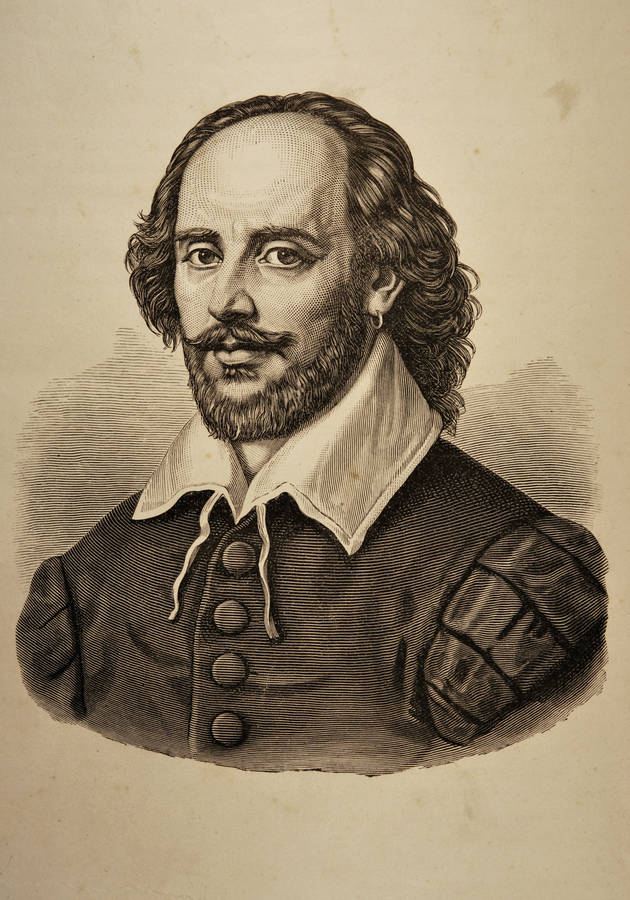St. Patrick is arguably the most well-known Christian saint. But what is it that we really know about St. Patrick? In “St. Patrick: The Life and World of Ireland’s Saint,” J. B. Bury reexamines the historical sources on St. Patrick to draw a more accurate picture of his life. Bury was mainly interested in the history of the Roman Empire, and therefore approached the topic of St. Patrick from a historical, rather than a religious point of view. So get ready to learn more about Ireland’s patron saint!
Birth and capture
Patrick was born around A.D. 389 in Bannaventa, Britain, as Patricius Magonus Sucatus. It is uncertain where exactly Bannaventa was situated, but it was somewhere near the southwestern shores of present-day England. Patrick’s father, Calpurnius, was a Briton and by extension a citizen of Rome, as Britain formed part of the Roman Empire at the time.
Calpurnius was a decurion, meaning he was a landowner with more than 16 acres of land. Decurions were burdened with collecting and paying the imperial taxes. Calpurnius had also sought ordination and was a Christian deacon. He seemed to have been an orderly citizen of Rome, but he was certainly aware of the threats facing Britain at the time.
On three sides, Britain was beset by enemy forces, both bold and ruthless. Toward the northern frontier were the Picts of Caledonia, on the western shores Britain was threatened by the Gaels and Scots of Ireland. Finally, from the south and east Saxon freebooters would often attack and attempt to conquer Britain.
Britain, at the time of Patrick’s birth, was characterized by upheaval and warfare. Patrick, however, was born shortly before or after a period of security and peace. As the son of a deacon, he was raised in the Christian faith and educated in the Christian scriptures. He is also sure to have adopted a deep reverence for the Roman Empire in his early years, as it provided him with freedom and security.
At age 16, Patrick’s village and the surrounding areas were attacked by Irish freebooters. They took a vessel full of captives, Patrick being one of them, and he spent the next six years as a prisoner and slave in Ireland. His own accounts conflict with other accounts from the time of where exactly he was taken, but it seems he was either a captive in Connaught or Ulster, or both.
For Patrick, being a prisoner in Ireland meant having been taken “to the ultimate places of the earth,” as he put it. For the Roman-educated Patrick, anything outside the Roman Empire meant being far away from civilization, and at the very edge of the world.
Escape
Patrick’s six years in captivity were his most formative in terms of his Christianity. While he had been educated in the Christian faith, it had never played a major role in his life up to that point. Now, however, Patrick would be saying up to a hundred prayers a day; the seeds for his later missionary work were sown at this time.
Patrick was also feeling increasingly homesick, so he started plotting his escape. In his dreams, he heard voices that told him he would soon return to his native land, and Patrick took these voices to be divine intimations. Somehow, Patrick managed to reach a port, and, like a miracle, a ship that was about to sail. It was a trading ship with a cargo of Irish wolfhounds.
Patrick offered to work his passage to whichever port the ship was bound for, but the shipmaster declined. Patrick, desolate, turned around, looking for somewhere to spend the night and praying at the same time. Before he had finished his prayer though, he was called back to the ship and made his escape onboard after all.
After three days, the ship reached its port, probably in Gaul. Patrick tells of journeying through a desert for 28 days following his arrival. Gaul was ravaged by violence at the time, so it is likely that the ship’s crew decided to avoid the main streets and villages for fear of attacks, and instead took a route through the wilderness, all the way to Italy.
Patrick was traveling with a heathen crew, and they kept teasing him about his Christian faith. When, after a while, they ran out of food, the shipmaster said to Patrick: “Now, O Christian, thou sayest thy God is great and almighty. Why then dost thou not pray for us? For we are in danger of starvation, and there is no likelihood of our seeing any man.”
Patrick asserted that nothing was impossible for God if you turned to him truly, and shortly afterwards, the traveling crew came upon a group of pigs, which saved them from starvation.
Patrick heard more voices in his dreams, one of which was telling him that he should stay with his present company for two months. So dutifully, after two months, Patrick somehow made his escape and started to make his way back home to Britain.
Missionary zeal
Eventually, Patrick reached the coast of Provence where he found refuge in the cloister of Honoratus, on the island of Lerinus. Patrick decided to stay there for a while, and his years in the cloister had a lasting influence on him. They convinced him that monastic societies, in the future, should become a crucial element of a Christian church.
Finally though, Patrick returned to Britain. Once back home, he had a dream vision of a man called Victoricus, who seemed to have come from Ireland. He held a pile of letters from which he gave one to Patrick. The letter, according to Patrick, contained “the voice of the Irish.” In his dream, Patrick heard the cry of the Irish folk way out near the Western Sea, “We pray thee, holy youth, to come and again walk amongst us as before.”
Patrick took this as the divine sign to return to Ireland as a missionary, in order to save the helpless unbaptized. To prepare himself for his missionary life, Patrick returned to Gaul. His leaving for Ireland was delayed several times, lastly because of the death of the bishop Palladius, who had previously been appointed bishop of the Scots in Ireland.
When Palladius died in A.D. 432 Patrick was seen as his successor and was immediately consecrated as bishop. So, when Patrick finally set out for Ireland, he was “invested with the authority and office which would render his labors most effective,” Bury writes.
Patrick in Ireland
There is no information on the early stages of Patrick’s missionary work in Ireland, but he likely started in the south of the country, and moved north. The High King of Ireland was King Loigaire at the time. It is unclear how far Loigaire’s reach extended in the so-called “under-kingdoms of Ireland” further south, but he definitely had absolute power in the northwest of Ireland, in Connaught.
While Patrick had not entered Connaught yet, it was easy for Loigaire to ignore the introduction of the Christian faith in other parts of Ireland. Loigaire was firmly pagan himself, and once Patrick moved closer to his seat of power, Loigaire had to decide what to do about this new faith.
Loigaire was able to distinguish between his personal preferences and what would be best for his kingdom and his people. He no doubt recognized the growing strength of Christianity, which had flowed over from the Roman Empire into Ireland. On the other hand, Loigaire was chiefly advised by his druids, which of course saw Christianity as threatening their profession, religion, and gods. Loigaire ultimately agreed to the introduction of Christianity, and the encounter between him and Patrick subsequently became the focus of mythmaking.
Patrick and the druids
A famous legend recounts the battle between pagan beliefs and Christianity. According to the story, Patrick celebrated his first Easter on the island with an Easter fire on the hill of Slane. The Easter celebrations coincided with a royal festival at the palace in Tara, hosted by King Loigaire. According to custom, no fire was allowed to be lit in Ireland on that night until the royal fire had been lit.
So the king was alarmed and surprised when he saw the gleam of a fire from the hill of Slane. His druids, upon being consulted, told him that unless he extinguished the fire on the very same night, it would burn forever and seduce his people. So the king yoked up nine chariots and made his way to the hill of Slane with his queen and his two chief sorcerers.
When Loigaire got to the hill, he was advised by his druids not to go to the hilltop, but instead to summon Patrick to him. They also said that if anyone would stand up when Patrick came down, they would be converted and worship Patrick. When Patrick finally came down, only one man stood up, Ere, who was immediately converted and blessed by Patrick.
Then, one of the sorcerers started expressing strong words against the Christian faith, and Patrick prayed to God that the blasphemer would be dashed on the ground. According to the legend, the sorcerer was then flung into the air as if by an invisible hand and was dashed on the ground.
The second miracle Patrick worked occurred after he uttered the words, “Let God arise, and let his enemies be scattered,” after which a giant earthquake killed all but the king, queen, and one of their sorcerers. The king then kneeled before Patrick and converted to Christianity.
Patrick’s place in history
Eventually, King Daire of Oriel in Ireland granted Patrick a site for the founding of a monastery. On the hill Ardd Mache Patrick founded the monastery of Armagh, which would later become the chief ecclesiastical city of Ireland. Armagh is not where Patrick died, however. He resigned as head of church of Armagh some years before his death and spent his last four years at Saul in northern Ireland.
It is unclear where Patrick was buried, but likely it was in Saul. Following his death, a lot of mythmaking surrounded his ultimate place of burial, with sources claiming his burial place to be in Armagh, Saul, or Downpatrick. This is proof, according to Bury, that Patrick was quietly buried in an unmarked grave.
Patrick is now mostly remembered for having brought Christianity to Ireland, but in fact, he accomplished three things. He did not introduce Christianity, but rather he organized the Christians who already existed in Ireland and brought the Christian faith to unconverted pagan kingdoms of Ireland, particularly in the west. Importantly, he also made Ireland a formal part of universal Christendom, by bringing it into connection with the Church of the Empire.
The schools of learning of Ireland that made the Scots famous a few generations later can also be traced back to Patrick, as he had brought Roman ideas and literature to Ireland. Following this, the Irish soon began synchronizing their own insular memories with the annals of Rome and Greece and endeavored to connect their Irish history with the history of the world.
Bury concludes that thanks to Patrick, Christianity in Europe was “organized and established, so that it could never be undone, mainly by the efforts of one man, a Roman citizen of Britain, who devoted his life to the task.”
Final Notes
While St. Patrick was not the first to introduce Christianity to Ireland, he changed the shape of Christendom forever. With his missionary work in Ireland he firmly positioned Ireland within the larger framework of Europe and the world at the time.
12min Tip
If you are interested in the life of St. Patrick, why not read another book about him, such as “Saint Patrick Retold” by Roy Flechner?





























